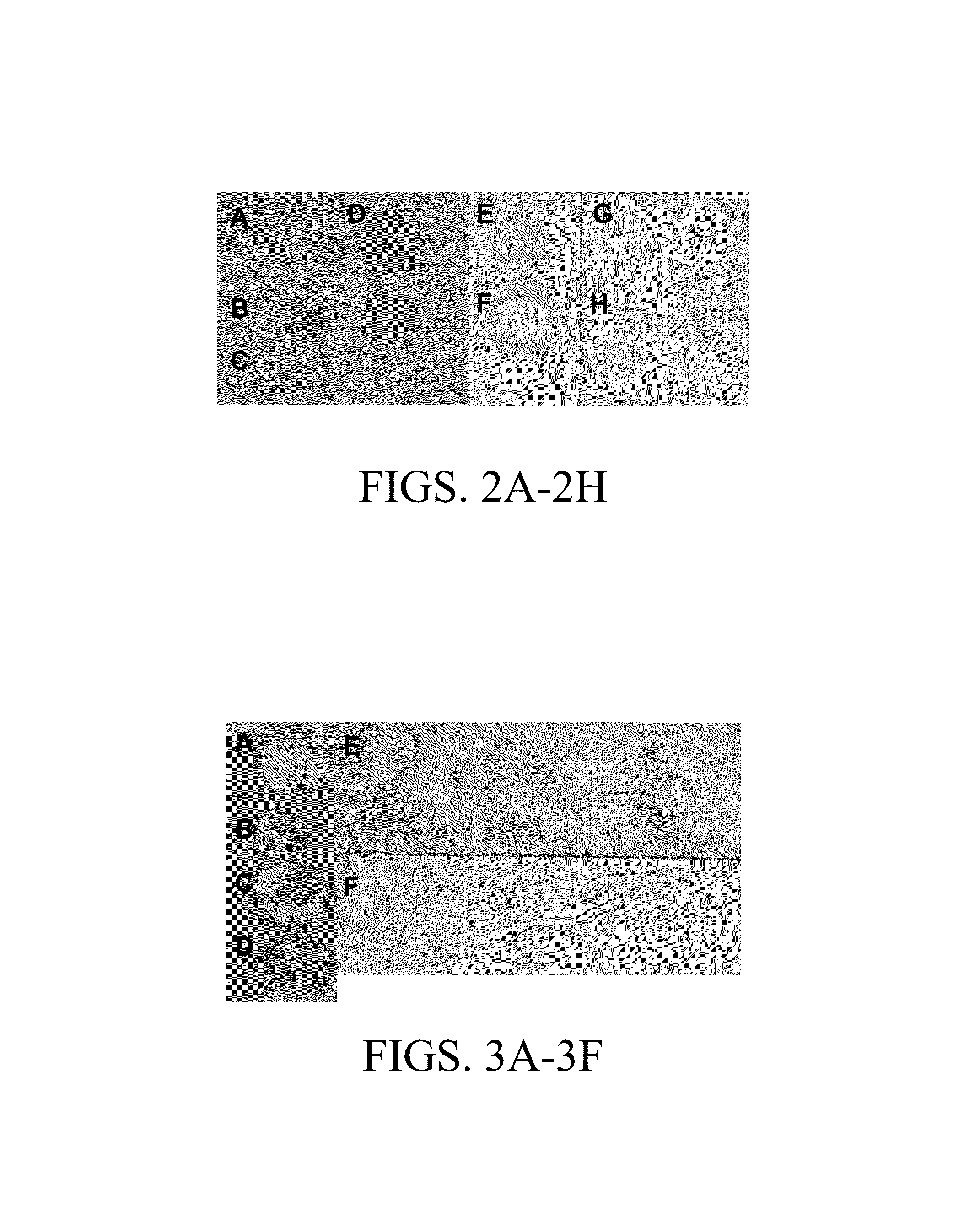Materials and methods for assessing and mapping microbes and microbial biofilms on wounds
a technology of microorganisms and biofilms, applied in the field of materials and methods for assessing and mapping microorganisms and microbial biofilms on wounds, can solve problems such as poor wound healing, and achieve the effect of facilitating assessment of effects
- Summary
- Abstract
- Description
- Claims
- Application Information
AI Technical Summary
Benefits of technology
Problems solved by technology
Method used
Image
Examples
example 1
Assay Chamber
[0061]In one embodiment the subject invention provides an assay chamber for processing a topographical wound map microbial / microbial biofilm detector assay membrane (FIG. 1). An impression is taken of the wound using a membrane for obtaining a specimen of microbial biofilm from wounds (FIG. 1A). The impression can be used to produce copy blots using an appropriate membrane / device, or it can be processed directly. The wash chamber consists of separate chambers containing reaction and wash buffers to process the assay membrane.
example 2
Assay Cassette Method
[0062]In one embodiment, the subject invention provides an assay cassette method for processing a topographical wound map membrane. An impression can be taken of the wound using a membrane for obtaining a specimen of microbial biofilm from wounds (FIG. 1A). The impression can be used to produce copy blots using appropriate membrane(s) / device or will be processed directly.
[0063]The assay cassette may contain a fluid reservoir at the base containing a compressible material to hold the reaction buffer. The assay cassette may contain an upper dry wicking layer employed to pull fluid through the assay membrane to facilitate the assay reaction and to “wash” the assay membrane.
example 3
Assay Method
[0064]FIG. 1 is a schematic of one embodiment of the subject invention. FIG. 1A shows a wound “map” affinity membrane blot that contains the bound ligand (e.g. antibody) to the unique marker of the microorganism (i.e. bacteria, fungi) or biofilm. This membrane is applied to the wound surface. The ligand (e.g. antibody) that is bonded onto the blot binds with the unique marker for the target microorganism or biofilm (e.g., polysaccharide of biofilm matrix). The blot is then transferred into the first chamber of a developing block that contains a solution of the same ligand that is labeled with a reporter (e.g. alkaline phosphatase enzyme). After a short incubation time (˜10 minutes) the wound map blot is transferred into the second chamber to wash out any unbound labeled-ligand and after a minute of rinsing the blot is transferred into the final third chamber that contains the substrate for the enzyme of the labeled-ligand.
[0065]After a short period of development (˜5 min...
PUM
| Property | Measurement | Unit |
|---|---|---|
| thickness | aaaaa | aaaaa |
| thickness | aaaaa | aaaaa |
| resistance | aaaaa | aaaaa |
Abstract
Description
Claims
Application Information
 Login to View More
Login to View More - R&D
- Intellectual Property
- Life Sciences
- Materials
- Tech Scout
- Unparalleled Data Quality
- Higher Quality Content
- 60% Fewer Hallucinations
Browse by: Latest US Patents, China's latest patents, Technical Efficacy Thesaurus, Application Domain, Technology Topic, Popular Technical Reports.
© 2025 PatSnap. All rights reserved.Legal|Privacy policy|Modern Slavery Act Transparency Statement|Sitemap|About US| Contact US: help@patsnap.com



